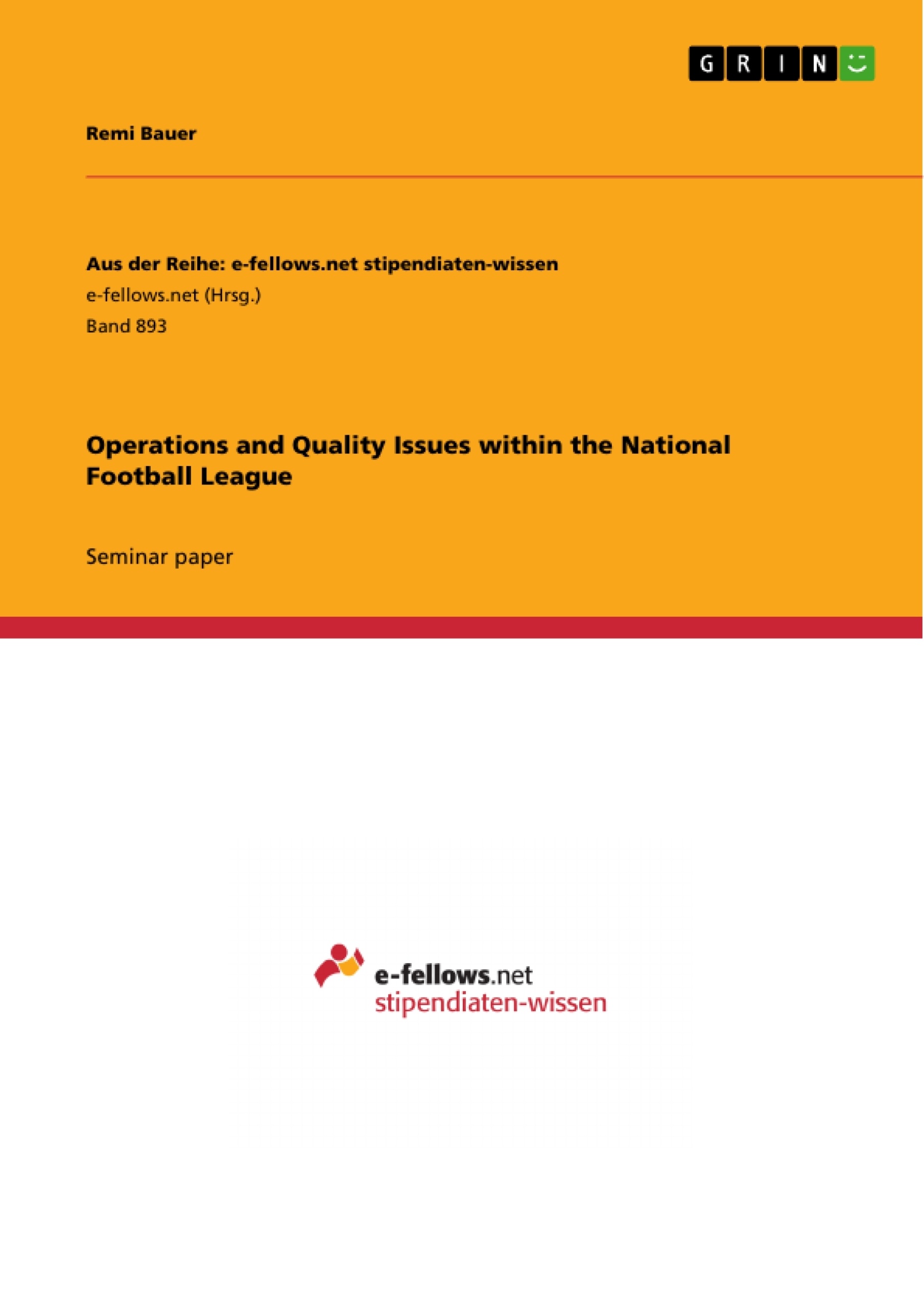The purpose of this paper is to examine and identify operations and quality issues within secondary services of the National Football League and to provide practical recommendations how to operational and quality performance can be improved. This exploratory conceptual paper is based on the synthesis of academic sources stating that sporting operations managers should focus their attention on secondary services as those are within managerial control while the professional game as the core service is not. Exploring ticket pricing strategies, parking operations and concessions’ service quality, the findings indicate that continuous tracking of customer satisfaction and perception is needed to observe if introduced measures are effective and where areas for improvement are.
Inhaltsverzeichnis (Table of Contents)
- Introduction
- Ticket prices
- Issue
- Recommendation
- Parking
- Issue
- Recommendation
- Concessions
- Issue
- Recommendation
- Conclusion
Zielsetzung und Themenschwerpunkte (Objectives and Key Themes)
This paper aims to analyze operations and quality issues within the secondary services of the National Football League and propose practical recommendations for improving operational and quality performance. The paper focuses on secondary services, such as ticketing, parking, and concessions, as they are within managerial control, unlike the core service of the American football game itself.
- Improving operational and quality performance within the National Football League
- Analyzing secondary services like ticketing, parking, and concessions
- Assessing the impact of ticket pricing strategies on attendance and revenue
- Exploring the role of demand management and yield management in optimizing revenue
- Evaluating the effectiveness of various operations and quality management theories and models
Zusammenfassung der Kapitel (Chapter Summaries)
- Introduction: This chapter provides an overview of the National Football League as a major event series, highlighting the significance of secondary services in contributing to the overall game day experience. The paper focuses on ticket pricing, parking, and concessions as key areas for improvement.
- Ticket prices: This chapter explores the issue of declining attendance at NFL games despite rising ticket prices. The paper analyzes the factors influencing ticket pricing strategies and highlights the need for a more proactive approach.
- Parking: This chapter focuses on the parking process and its impact on the game-day experience. The paper discusses potential issues related to parking operations and provides recommendations for improving parking efficiency.
- Concessions: This chapter examines the service quality at concession stands, identifying potential issues and offering recommendations to enhance the customer experience.
Schlüsselwörter (Keywords)
The main keywords and focus topics of this paper include operations management, quality management, secondary services, National Football League, ticket pricing, demand management, yield management, parking operations, concessions, and customer satisfaction.
- Citar trabajo
- Remi Bauer (Autor), 2012, Operations and Quality Issues within the National Football League, Múnich, GRIN Verlag, https://www.grin.com/document/268645



